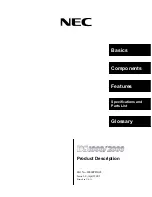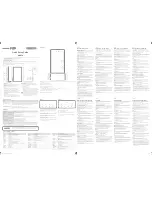
33
LRR 1-52, LRR 1-53, URB 55 - Installation & Operating Manual -
850645-01
Electrical connection - LRR 1-52, LRR 1-53
Connecting the 24 V DC power supply
■
The LRR 1-52 or LRR 1-53 conductivity controller is supplied with 24 V DC.
■
A safety power supply unit that delivers a Safety Extra Low Voltage (SELV) must be used to supply the
equipment with 24 V DC.
■
Use an M0.5A fuse as an external fuse.
Connecting the MIN/MAX/CLOSED/OPEN output contacts
■
Connect the outputs as shown in wiring diagrams
Fig. 16
to
Fig. 18
.
■
Only use the terminals specified in the wiring diagrams.
■
Use an external slow-blow T2.5A fuse to protect the switching contacts.
■
If used as a conductivity limiter, the LRR 1-52, LRR 1-53 conductivity controller does not interlock
automatically when the MAX limit is exceeded.
■
If the installation requires a lockout function, this must be implemented in the downstream (safety)
circuit. This circuit must conform to the requirements of EN 50156.
Notes on connecting inductive loads
All connected inductive loads, such as contactors and actuators, must have interference suppression
using RC combinations as per the manufacturer's specifications.
Connecting an LRG 12-2, LRG 16-4, LRG 17-1, LRG 19-1 conductivity electrode and a TRG 5-xx
resistance thermometer
■
Use a shielded, multi-core, twisted-pair control cable with a minimum conductor size of 0.5 mm
2
, e.g.
LIYCY 4 x 0.5 mm
2
.
■
Connect the conductivity electrode as shown in wiring diagrams
Fig. 16
to
Fig. 17
.
■
Route connecting cables separately from power cables.
Connecting an LRG 16-9 conductivity electrode
■
The LRG 16-9 conductivity electrode features an M12 A-coded 5-pole sensor connector. A pre-wired
control cable (with plug and socket) is available in various lengths as an accessory for connecting the
equipment.
■
To connect the LRR 1-52 conductivity controller, please remove the plug and wire the terminal strip as
shown in wiring diagrams
Fig. 16
to
Fig. 17
.
■
If you are not using the pre-wired control cable:
Use a shielded, multi-core, twisted-pair control cable with a minimum conductor size of 0.5 mm
2
,
e.g. LIYCY 5 x 0.5 mm
2
.
In addition, connect a shielded socket to the control cable at the conductivity electrode end.
■
Route connecting cables separately from power cables.
















































